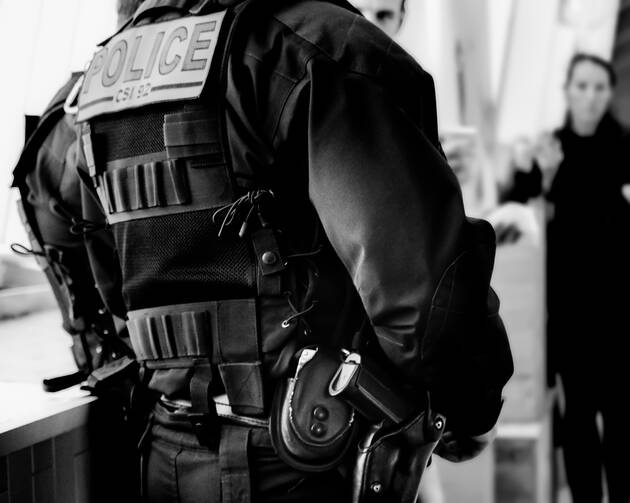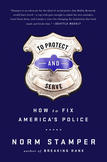Former Seattle police chief calls for fundamental changes to U.S. policing
For those unfamiliar with law enforcement, former Seattle Police Chief Norm Stamper’s To Protect and Serve provides an excellent introduction. Going from the basic tools on officers’ belts to the roller-coaster emotions of officers involved in a vehicle pursuit, Stamper clearly explains police work. His descriptions of the essential aspects of policing alone would make To Protect and Serve a good read.
But Stamper’s extensive experiences as a law enforcement officer also undergird his insights into the weaknesses in policing. These are weaknesses that academicians have known about for many years, concerning police culture, supervision, training and a trend toward militarization. Stamper discusses, for example, how officers feel they must maintain respect in the field—sometimes leading them to engage in illegal acts, in what social scientists call the “attitude effect.” That is, officers may resort to making an arrest or frisking a person simply because of that person’s “bad” attitude toward the officer. Stamper also discusses the one bad cop, or “rotten apple,” theory that most police agencies fall back on when a scandal goes public. Stamper points out that this is often not an accurate assessment and that the scandal indicates a systemic problem (see the Knapp and Mollen Commissions in New York City).
Stamper cites specific studies from organizations including the Police Executive Research Forum (PERF), as well as Sir Robert Peel’s original principles of policing and training techniques like Lateral Vascular Neck Restraint (L.V.N.R.). He uses examples from his career and current events effectively, inserting strong opinions on controversial matters.
Stamper’s extensive experiences as a law enforcement officer also undergird his insights into the weaknesses in policing.
One of the weaknesses of the book is the author’s armchair quarterbacking of events. He talks, for example, of the death of Eric Garner in police custody as if the officers used excessive force in an overt way, including the use of something “worse” than a chokehold. This is not necessarily accurate. Could it have been handled differently? Of course! But the grand jury did not indict the officers, and video footage is often much more complicated than one might assume; interpretation needs to be prudent and reasoned. The unfortunate series of events that led to the death of Mr. Garner and many similar situations are subject to differing—sometimes vastly differing interpretations, which Stamper rarely exposes.
The most glaring omission in the book, however, is his failure to discuss problems with the newest rage in policing—for example, police performance management (often called CompStat, for computer statistics). Based on the scientific literature, the abuse of CompStat-like systems is fairly common in places like Baltimore, New Orleans, New York City, Chicago and Milwaukee. The manipulation of crime reports to make an agency look better and placing enormous pressures on officers to improve numbers are two examples of well-documented weaknesses.
Indeed, the skyrocketing of forcible stops in New York City, from about 100,000 in 2001 to nearly 700,000 in 2011, can be traced to performance management. My research with Eli Silverman of John Jay College includes two surveys with thousands of officers that clearly showed the overwhelming pressure from supervisors to write summonses, make arrests and conduct forcible stops. Commanders had to cover themselves at CompStat meetings, where the upper echelon would berate, yell at and embarrass their fellow officers. Performance management can be a good, but when it is abused, as in New York City (whose model was copied throughout the democratic world), it creates a numbers-crunching system that dehumanizes officers and citizens alike. And racial minorities bear the brunt of this policy (see Floyd v. City of New York, the stop-and-frisk case).
Stamper’s solutions, unfortunately, are the equivalent of tear-gassing law enforcement.
Stamper’s solutions, unfortunately, are the equivalent of tear-gassing law enforcement. He seems to take for granted his expertise in policing by suggesting a new system with far more citizen control. Citizens’ views, however, are often clouded by media images. Counter to the commonplace view that officers should always shoot to injure rather than to kill, even Stamper sees that shooting to kill is in some circumstances the best course of action—not an uncommon sentiment among civilians. He seems willing to delegate leadership to civilians, but ultimately police are the experts (like doctors) who should work closely with the communities they serve. In this area, Stamper is too radical and not cautious enough about his recommendations.
Informed citizen oversight is one thing, but having uninformed elected officials running law enforcement—that is a disaster. Stamper’s ideas on arming citizens also border on vigilantism. Sure, neighborhood watch groups are a great idea, but not wholesale arming of the public. He almost seems to suggest we form a “posse” to get the bad guys. Additionally, he talks about how the Department of Justice should control local and state police. But our founding fathers feared King George, and thus we have the Bill of Rights, a federal system, and many other protections; using the D.O.J. to enforce standards stretches the idea of federalism. While some reasonable standards are warranted, Stamper might talk instead about some less drastic solutions, such as the decertification of officers and the process for accreditation of police departments.
Despite the book’s flaws, I recommend To Protect and Serve as informative and provocative, even with some questionable ideas. At a minimum, it will challenge the reader to think.
This article also appeared in print, under the headline “Policing the police,” in the Fall Literary Review 2017, issue.











